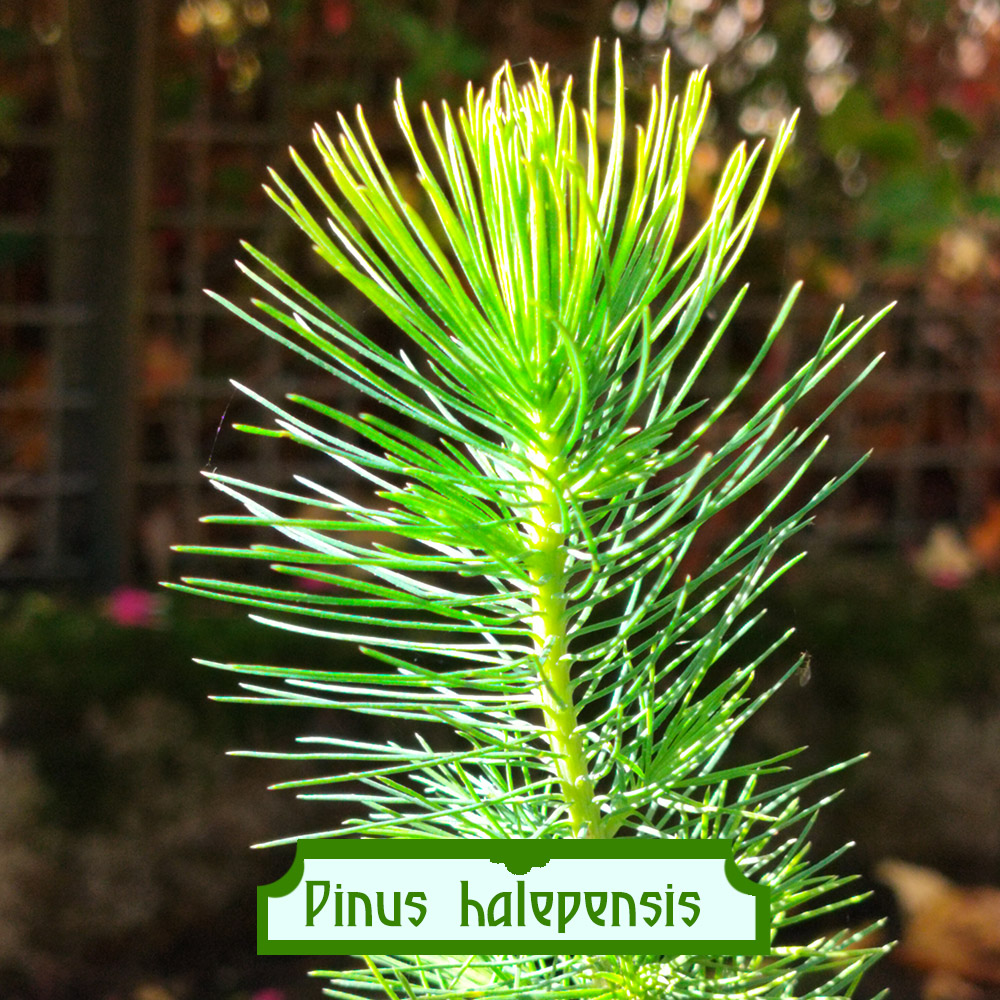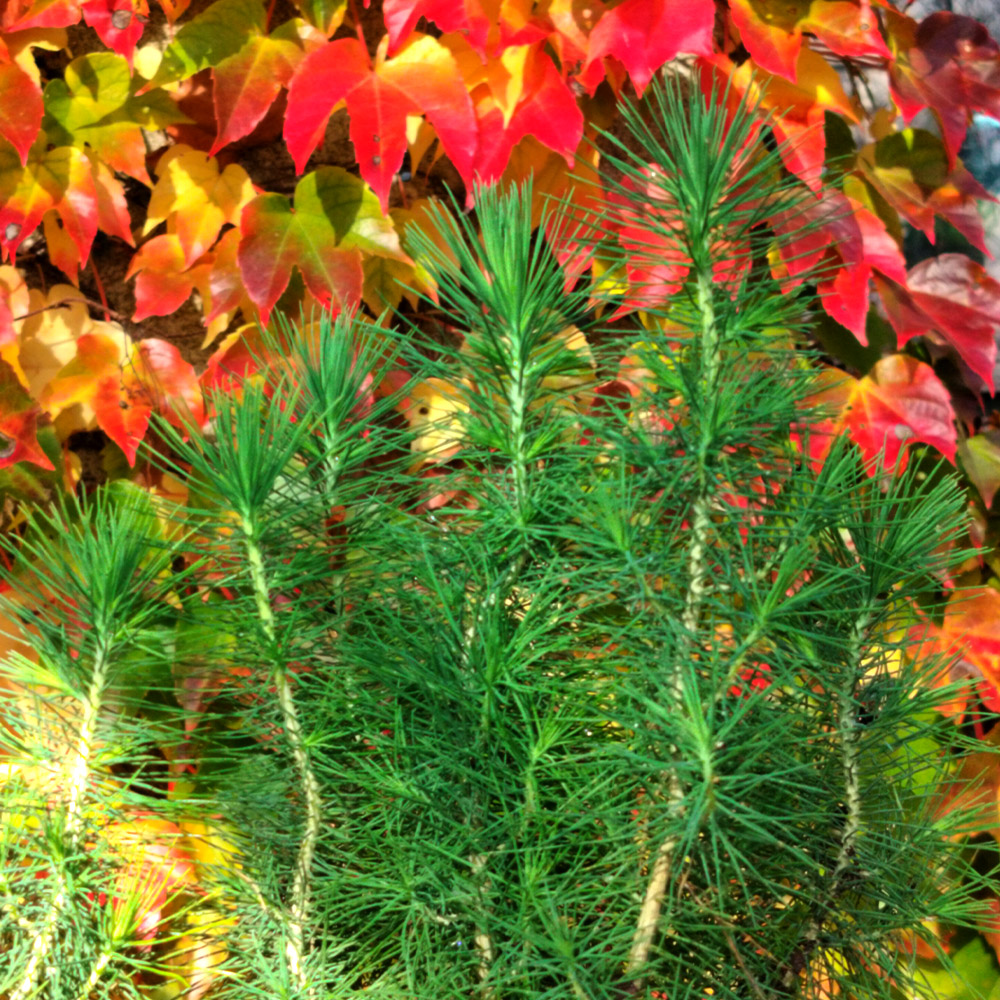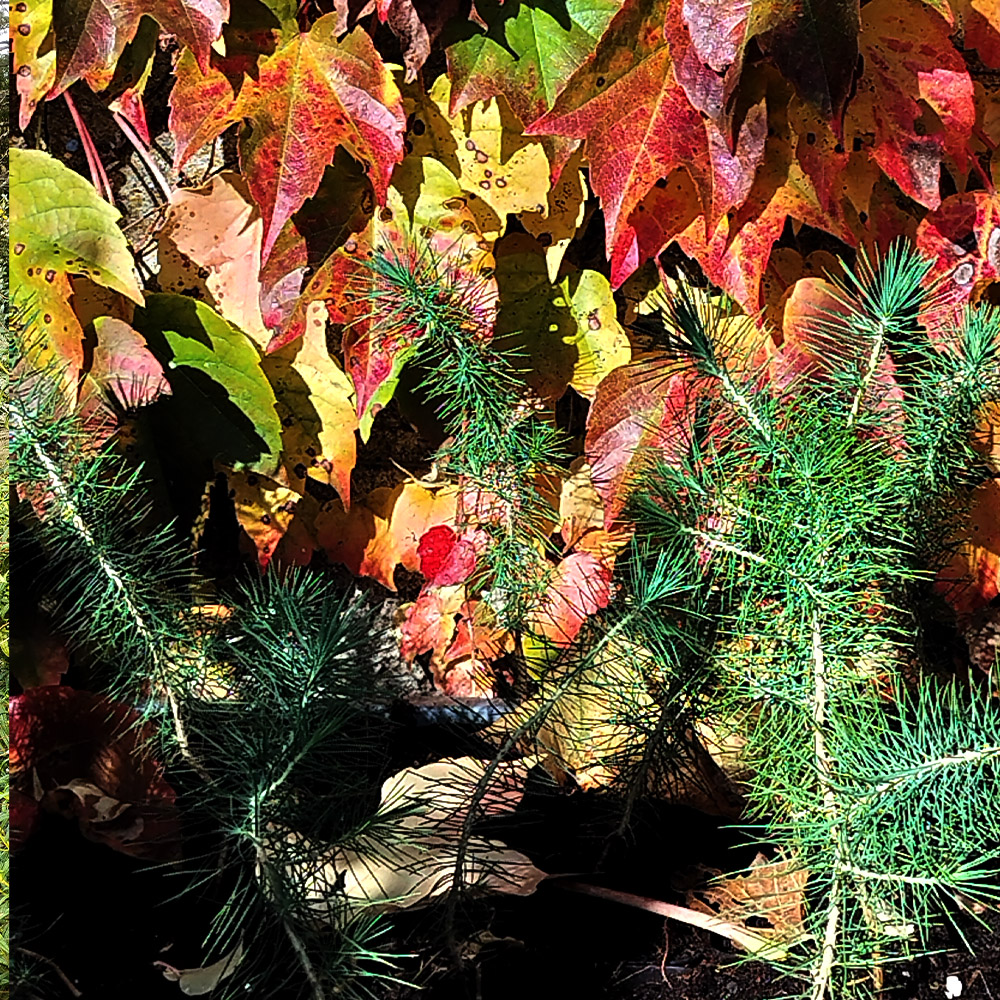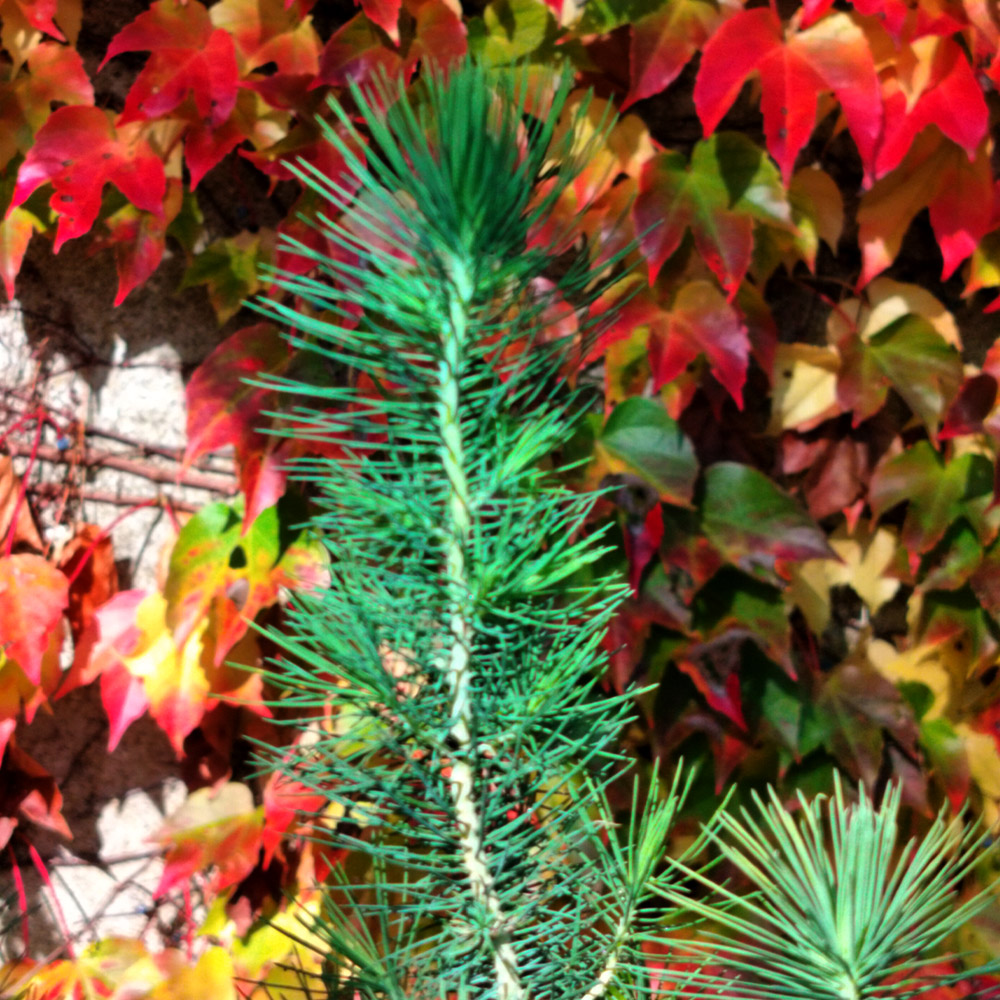No products in the cart.
Pinus halepensis
A drought tolerant, magnificent pine
Rated 0 out of 5
0 customer reviews10,00 €
Only 50 item(s) left in stock!
Tags: feuillage persistant, secheresse, vivace, xeriscaping
SKU: pda555
Category: Evergreen, Fragrant, Frost Hardy, Rewild, Trees

Pinus halepensis
10,00 €
Only 50 item(s) left in stock!
Pinus halepensis, known more commonly as the Aleppo pine, is remarkable for its distinctive soft, fluffy silhouette – a staple of any Mediterranean landscape.
Its fine, flexible needles are grouped in small light-green bundle that grow from buds that contain no resin.
These needles are distinctive as they release a wonderful balsamic scent when crushed. It smells like summer and calm.
The mature tree can reach up to 15 meters in height/6 meters in width with a rectangular shaped crown that is specific to this species.
The reason for the shape is that Pinus halepensis sheds its lower branches only late in life, contrary to many other pines, giving its crown a more or less rectangular shape, .
Its open foliage reduces wind resistance and minimizes storm damage, while its tolerance to salt spray allows it to flourish even on coastal cliffs.
Sold in 1L pots at 20cm height
👩🌾GARDENING TIPS👩🌾: Pinus halepensis
- The main requirement : Sun and lots lots lots of it > Sun exposure allows for the wood to harden, improving the pine’s resistance to frosts over time.
- Pinus halepensis tolerates nearly any type of soil—even rocky environments where real soil is scarce.
- While the young trees are sensitive to frost, the more mature adults can easily withstand temperatures as low as -15°C
- Looks amazing with Stipa tenuifolia, Festuca glauca, Thymus longicaulis ‘Odoratus’
Learn more about gardening with Pinus halepensis:
The Tale & The Botany: Pinus halepensis
Pinus halepensis is an evergreen conifer that usually reaches between ten and twenty meters in height, though some specimens in their natural habitat have been seen to reach twenty-five.
Its crown has an irregular, open, and often rectangular shape, a result of its tendency to retain its lower branches for a long time – unusual for a pine.
The trunk is typically light gray, sometimes twisted, and becomes darker and fissured as the tree ages.
The needles of the Aleppo pine are fine and flexible, grouped in pairs, and measure around six to twelve centimeters in length.
Their color is a soft, light green, and when crushed they release a distinct balsamic scent.
The cones are ovoid and medium-sized, generally six to twelve centimeters long, and often appear in clusters of two or three.
They mature over two to three years, turning from green to pale brown, and may remain attached to the branches long after releasing their seeds.
The seeds themselves are small and winged, easily carried away by the wind.
Myths and Legends
One of the most famous myths linked to the pine concerns Pitys, a nymph who was loved by Pan but pursued by the North Wind, Boreas.
To escape Boreas’s violence, she was transformed into a pine tree by the gods. The sighing of the wind through pine needles was said to be her eternal lament.
In early Christian tradition, the pine’s evergreen needles were reinterpreted as a sign of eternal life and resurrection.
It is seen across the Mediterranean cultures as a symbol of tenacity, resilience and grace in the face of adversity.
Practically, it is widely used today for reforestation, especially in eroded or arid areas, and is appreciated in landscaping for its graceful form and silvery-green foliage.
Its wood is light and soft—more suitable for fuel or small carpentry than for construction.
Ecology
Ecologically, Pinus halepensis is a true pioneer species.
It is one of the first trees to recolonize degraded or burned areas, playing a vital role in stabilizing soils and restoring vegetation cover.
The species has evolved a strong relationship with fire: its cones are often serotinous, meaning they open in response to heat, allowing the seeds to germinate in the nutrient-rich ash that follows a blaze.
This adaptation ensures rapid regeneration in fire-prone Mediterranean environments.
The Aleppo pine’s resilience to drought, heat, and wind is exceptional.
Its roots can penetrate deeply in search of water but also spread widely to exploit shallow soils, enabling it to thrive on dry, rocky, and nutrient-poor sites.
It supports a variety of different life forms – crossbills and finches feed on its seeds, while its canopy shelters insects and small mammals.
The tree also forms symbiotic relationships with mycorrhizal fungi, which enhance its nutrient uptake in poor soils.
Other names
Aleppo Pine
Origin
Mediterranean
Similaire
| Weight | 0,6 kg |
|---|---|
| Soil | Dry, Well-Draining |
| Exposure | Full Sun |
| Frost Tolerance | -10°C to -15°C |
| Size | 15m H x 6 m L |
| Container Size | 1L |
Reviews
0
Rated 0 out of 5
0 customer reviews5
0
4
0
3
0
2
0
1
0
Only logged in customers who have purchased this product may leave a review.
Related Products
Pycnanthemum verticillatum
A mountain mint from the eastern United States.
A mountain mint from the eastern United States.
Rated 0 out of 5
Tanacetum parthenium Aureum
A luminous bush covered in white daisy flowers all summer long
A luminous bush covered in white daisy flowers all summer long
Rated 0 out of 5
Mentha x gracilis ‘Variegata’
A striking mint with striped and flecked golden-yellow leaves that are gingery-minty.
A striking mint with striped and flecked golden-yellow leaves that are gingery-minty.
Rated 0 out of 5
Mentha x piperita ‘Chartreuse’
A spicy mint, known for its use in the production of liqueurs and herbal teas.
A spicy mint, known for its use in the production of liqueurs and herbal teas.
Rated 0 out of 5
Salvia officinalis Purpurea
Known for its striking purple foliage and aromatic properties.
Known for its striking purple foliage and aromatic properties.
Rated 0 out of 5
Mentha suaveolens ‘Calixte’
A yellow-green dappled variation of the fuzzy mint.
A yellow-green dappled variation of the fuzzy mint.
Rated 0 out of 5
Melissa officinalis
A perennial plant in the mint family that is adored by bees, royal families and tea drinkers.
A perennial plant in the mint family that is adored by bees, royal families and tea drinkers.
Rated 0 out of 5
Helichrysum italicum
An evergrey, fragrant perennial that will bring a distinctly Mediterranean atmosphere.
An evergrey, fragrant perennial that will bring a distinctly Mediterranean atmosphere.
Rated 0 out of 5
Solidago ‘Golden Shower’
Beautiful showers of yellow flowers
Beautiful showers of yellow flowers
Rated 0 out of 5
Nepeta x faassenii
Catnip is known for its grey-green, aromatic foliage and masses of lavender blue flowers.
Catnip is known for its grey-green, aromatic foliage and masses of lavender blue flowers.
Rated 0 out of 5
Salvia microphylla
Fragrant, hardy and drought tolerant with a bright and abundant flowering season.
Fragrant, hardy and drought tolerant with a bright and abundant flowering season.
Rated 0 out of 5
Lavandula angustifolia
A highly aromatic, flowering perennial used for cooking in many cultures
A highly aromatic, flowering perennial used for cooking in many cultures
Rated 0 out of 5
Mertensia maritima
A deciduous perennial with fleshy, blue-grey-green leaves that naturally thrives on the wind and sea swept coasts
A deciduous perennial with fleshy, blue-grey-green leaves that naturally thrives on the wind and sea swept coasts
Rated 0 out of 5
Glechoma hederacea
A sweet smelling ground cover, producing little blue flowers all summer long.
A sweet smelling ground cover, producing little blue flowers all summer long.
Rated 0 out of 5
Artemisia alba subsp camphorata
A highly fragrant, grey-green bush.
A highly fragrant, grey-green bush.
Rated 0 out of 5
Galium odoratum
A fragrant ground cover with a unique shape
A fragrant ground cover with a unique shape
Rated 0 out of 5
Trachelospermum asiaticum ‘Ogon Nishiki’
Jasmine with colorful foliage and lovely white flowers in summer
Jasmine with colorful foliage and lovely white flowers in summer
Rated 0 out of 5
Salvia sclarea – Clary Sage
A fuzzy perennial that is largely grown for its essential oil.
A fuzzy perennial that is largely grown for its essential oil.
Rated 0 out of 5
recent view product
Crassula perforata
A slow-growing succulent with graphic rambling stems
A slow-growing succulent with graphic rambling stems
Rated 0 out of 5
Symphyotrichum ericoides f. prostratum ‘Snow Flurry’
Large airy ground cover of brilliant white flowers.
Large airy ground cover of brilliant white flowers.
Rated 0 out of 5
Aegopodium podagraria ‘Variegata’
A popular light, green and white groundcover.
A popular light, green and white groundcover.
Rated 0 out of 5
Festuca glauca
An ornamental, metallic blue grass
An ornamental, metallic blue grass
Rated 0 out of 5
Muehlenbeckia complexa ‘Golden Girl’
A fast-growing, golden-leaved ground cover or a trailing plant
A fast-growing, golden-leaved ground cover or a trailing plant
Rated 0 out of 5





















































There are no reviews yet.